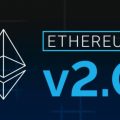
Recently, Ethereum founder Vitalik Buterin has been talking a lot about the new consensus algorithm that hepraises for being an environmentally friendly alternative to traditional mining. However, not only Buterin speaks about this.
The Proof-of-Stake (PoS) algorithm is slowly but surely occupying a niche in the cryptocurrency market, currently holding billions of dollars in cryptocurrencies.
This begs the question: Can investing in the right PoS coin mean a return on investment of up to 150% per year?
Anyone familiar with cryptocurrency already knows aboutProof-of-Work, an original way of mining and verifying cryptocurrencies. Bitcoin, the most famous cryptocurrency, runs on PoW. In this system, miners find blocks in the blockchain and confirm transactions using special equipment that requires huge amounts of energy. Besides the obvious harm to the environment, another disadvantage of PoW is that the amount of electricity consumed reduces the profits of crypto traders, not to mention the cost of the equipment itself.
PoS is newer and therefore more advanced. It is used for high performance innovative cryptocurrencies.
Let me remind you what Proof-of-Stake is.
In PoS, trusted nodes replace miners.This much less energy-intensive process has been dubbed the Green Consensus. While in PoW, a person becomes a miner by setting computing power, in PoS, not the amount of computing power, but the number of coins gives someone the right to call himself a miner.
As soon as the node deposits coins into the process,called staking, coins cannot be returned for as long as the node continues to find blocks. This helps to ensure that every node is working for the good of the whole - no node can work against the value of the cryptocurrency without compromising its own investment. In exchange for their coins, the nodes receive an investment income similar to keeping money in a savings account with a bank.
However, ROI is notthe only benefit that nodes get from their participation. Since nodes have a say in currency-related decisions, they are actively involved in the development of the cryptocurrency ecosystem.
“There is no magic pill thatwill make you rich and the staking ecosystem is full of exciting projects as well, ”said a spokesperson for the P2P Validator staking service. “In the case of solid projects, everyone who makes a bet contributes to the safety of the ecosystem and becomes an active part of the project, receiving a reward for this type of service.”
As the knots abandon speculativeincome due to the long-term development and implementation of the project, prices are likely to rise, in contrast to currencies based on PoW, which do not provide such incentives.
Staking despite all its rewardstakes quite a long time. Some companies have begun to recruit more nodes, offering a less demanding option called "lazy" stacking by some. Lazy staking requires financial investment and little else. The management of the company takes over the confirmation and other tasks for which the nodes are usually responsible.
The nodes, meanwhile, receive accrued interest on the invested coins.
According to the PoS list, currently onProof-of-Stake operates over 300 cryptocurrencies. But if that number doesn't seem small, place it in the context of the total available liquid cryptocurrencies: 4,000. PoS currencies represent only 9.60% of the cryptocurrencies on the market, with a market capitalization of $ 163 billion as of today. This percentage, although small, is promising.
But if you are promised coins with a yield of 150%, then you have to be naive to believe it.
If we talk about the best PoS coins in terms of profitability,then, in truth, none of these numbers represent what investors typically expect to benefit from staking. Staking has an average yield of about 11% per annum, which is several times higher than even the more generous traditional offers. Above average staking can also imply above average risk. It is important to assess this risk by researching the currency and staking platform before investing in any coin, and even more so when it comes to coins with exceptionally high returns.
Technically, staking is open to everyone.However, when it comes to Staking-as-a-Service platforms, there can often be a fairly high minimum investment. And then, of course, there is the time it takes to actually perform the duties of the node. (not to mention the expertise and equipment required).
Staking services offer a convenient solutionthe last problem. The investor invests while the service does the light work of production and confirmation, and then the return on investment takes place. There are already dozens of staking services out there and the market is growing. Each service has its own advantages and disadvantages, catering to the specific needs of a given niche.
For example, Staked currently lists 11 currencies withyield from 0.1% to 158%. P2P Validator offers smaller but less risky data collection. In a statement to Cryptohound, the company said annualized returns range from 7% to 12%. “These values can increase or decrease depending on the current parameters of a particular project. We accept delegations from Solana, Dfinity, NuCypher and Polkadot. "
It's easier with exchanges.Binance offers an annual income (APY) for staking Tron coins - 7-9%, EOS - 6.79%, DASH - 7.12%, Tezos - 6-7%, Stellar - 2-4% and a number of other coins. Kraken Tezos, Cosmos, Polkadot, etc. But do not forget that the exchanges have their own chips. One of them is a high percentage of commissions.
With applications for staking, things are easier (technically). TrustWallet offers Tezos staking - 6.11%; Tron 2.68; Cosmos - 9.8%; Algorand 7.49; Kava - 12.68%, etc.
SpaceBot rewards DEL coins up to 94.6% yearly, BIP (Minter) 30.9%, BTT (DecimalChain) 40.5%, WDX (Tron) up to 293% and PZM 18.2% APY. Moreover, the payments are daily.
And also Atomic Wallet, Ledger and many other wallets have their own proposals, but each one is unique.
Is stacking fruitful or stupid?
Like any investment, staking has its ownAdvantages and disadvantages. The main advantage of staking is, of course, convenience. The investor simply brings capital and waits for the service to make a profit. At the same time, staking poses increased security risks compared to forms of cryptocurrency investment, as coins are usually stored in hot wallets. However, the staking industry is learning to eliminate this risk.
In addition to security issues, activity inthe crypto industry as a whole remains a "cautious investor" business. It is vital that investors work not only with the coin, but also with the platform team before investing money. As recent headlines suggest, ineffective and fraudulent governance can be as serious a source of investor losses as market fluctuations.
Staking would not be popular inthe crypto realm for no reason. PoS coins may not have the 5-digit value of Bitcoin, but with coins growing at this rate, investing in PoS coins can now pay off





